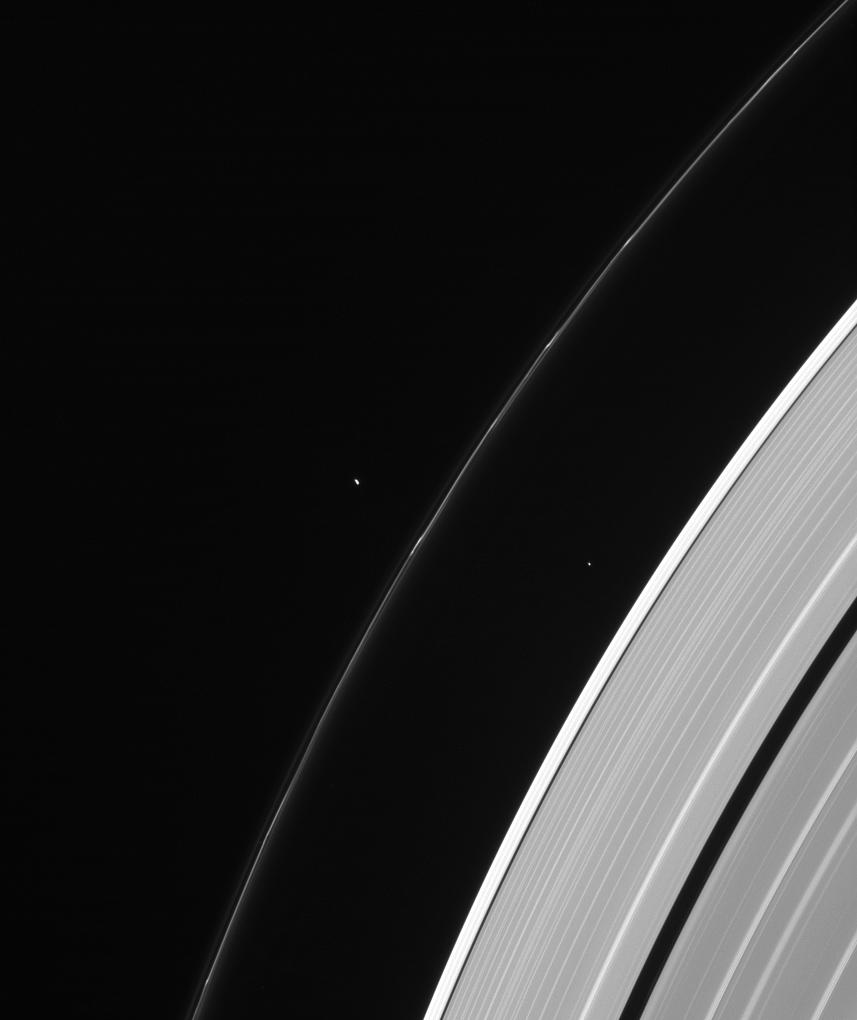Mini Moons

| PIA Number | PIA18279 |
|---|---|
| Language |
|
Are the moons tiny or are the rings vast? Both, in a way! The moons visible in this image, Pandora and Atlas, are quite small by astronomical standards, but the rings are also enormous. From one side of the planet to the other, the A ring stretches over 170,000 miles (270,000 km), dwarfing these small moons of Saturn.
Pandora (50 miles, or 81 kilometers, across) orbits in the vicinity of the F ring, along with neighboring Prometheus, which is not visible in this image. These moons interact frequently with the narrow F ring, producing channels and streamers and other interesting features. Atlas (19 miles, or 30 kilometers across) orbits between the A ring and F ring in the Roche division.
This view looks toward the sunlit side of the rings from about 34 degrees above the ringplane. The image was taken in visible light with the Cassini spacecraft narrow-angle camera on Feb. 17, 2014.
The view was obtained at a distance of approximately 1.7 million miles (2.8 million kilometers) from Pandora and at a Sun-Pandora-spacecraft, or phase, angle of 110 degrees. Image scale is 11 miles (17 kilometers) per pixel.
The Cassini-Huygens mission is a cooperative project of NASA, the European Space Agency and the Italian Space Agency. The Jet Propulsion Laboratory, a division of the California Institute of Technology in Pasadena, manages the mission for NASA's Science Mission Directorate, Washington, D.C. The Cassini orbiter and its two onboard cameras were designed, developed and assembled at JPL. The imaging operations center is based at the Space Science Institute in Boulder, Colo.
For more information about the Cassini-Huygens mission visit http://www.nasa.gov/cassini and http://saturn.jpl.nasa.gov . The Cassini imaging team homepage is at http://ciclops.org .
Credit: NASA/JPL-Caltech/Space Science Institute
